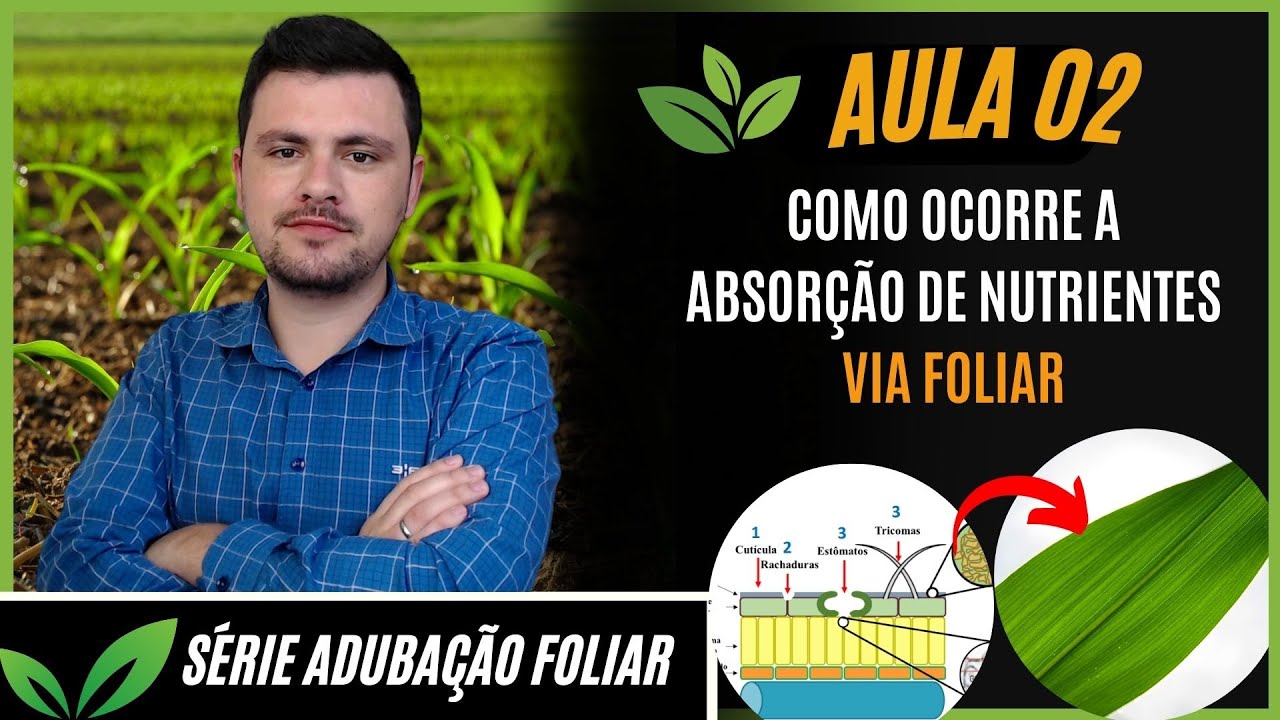Aula 02: Como Que Ocorre A Absorção De Nutrientes Pelas Folhas (Série Adubação Foliar)
Unleash Your Creative Genius with MuseMind: Your AI-Powered Content Creation Copilot. Try now! 🚀
Hello, dear readers! Today, we're diving into the second lesson of our foliar fertilization series. In this exciting session, we'll unravel the fascinating process of foliar nutrient absorption. So, don't miss out on this enriching journey. If you're enjoying our content, give it a thumbs-up, and make sure to subscribe to our channel. If you'd like to receive this material in a convenient PDF format, join our WhatsApp group. For those who have already joined, you're all set, but for newcomers, there's a link down below to get you registered. Let's get started, shall we?
The aim of today's lesson isn't to delve into advanced physiology or absorption intricacies. No, our goal here is to provide you with insights into the absorption process. We want you to grasp how absorption happens so you can relate it to real-world situations when you're applying foliar fertilizers.
The Marvel of Foliar Absorption
Now, what exactly is foliar absorption? As you probably know, plant roots are the specialized organs for nutrient absorption, drawing in essential elements like nitrogen, phosphorus, potassium, and micronutrients. However, we can also supplement nutrient intake through the foliage. This complements root absorption, particularly for micronutrients required in small doses during specific growth stages or for certain crops with unique needs. It's like an extra boost for your plants.
From a chemical perspective, the weather plays a significant role in the efficiency of foliar application. We'll delve into five internal and five external factors that influence nutrient absorption shortly. Keep in mind that the time it takes for nutrients to be absorbed and mobilized can vary greatly. Not all nutrients are created equal in this regard.
For instance, nitrogen from urea, which you might use to make your plants greener, is absorbed quickly. You can notice the difference within a few days. On the other hand, elements like iron take much longer – about 10 to 20 days. The key point here is that foliar application offers rapid visual results compared to soil application, even though the actual amount of nutrients absorbed through foliage is smaller.
The Inner Workings of Foliar Absorption
Now, let's explore the fascinating inner workings of foliar absorption. Picture a leaf cut in half to reveal its structure. The outermost layer is the cuticle, which acts like a protective wax covering. You've probably noticed that many leaves, like those of soybeans, kale, or oranges, have a shiny, waxy appearance on top. This wax serves as a shield against fungi and other pests, but it also inhibits nutrient absorption through the leaves.
To overcome this barrier, nutrients must pass through stomata, which are tiny openings, and the guard cells surrounding them. These stomata play a vital role in gas exchange and nutrient absorption. Nutrients travel through the parenchyma cells, either by apoplastic or symplastic pathways, eventually reaching the vascular tissues – xylem and phloem. Within these vascular tissues, nutrients are absorbed and can be redistributed to areas where the plant needs them the most.
Maximizing Foliar Absorption
To get the most out of foliar absorption, we need to pay attention to several factors. Let's explore both external and internal influences:
External Factors:-
Application Quality: Investing in proper application technology ensures thorough leaf coverage and helps the nutrients adhere effectively.
-
Temperature and Humidity: High temperatures can cause plants to close their stomata, hindering nutrient uptake. Choosing the right time for application can make a significant difference.
-
Light Conditions: Foliar absorption predominantly occurs during the daytime when stomata are open. This means it's best to apply nutrients in the late afternoon, early morning, or when there's still sufficient light.
-
pH Level: Monitoring the pH of your solution is crucial. An overly alkaline mixture can lead to flocculation, which can clog your spraying equipment.
-
Leaf Age and Type: Nutrient absorption is most effective in young leaves with smaller cuticles. These leaves offer less resistance to penetration.
-
Plant Size and Growth Stage: Timing is everything. For example, it's not very beneficial to apply foliar nutrients to newly transplanted seedlings that haven't yet established significant leaf area. However, during the flowering stage, nutrient absorption rates are higher.
-
Crop-Specific Knowledge: Each crop has unique nutritional requirements and characteristics. Understanding when and what to apply is essential for achieving optimal results.
-
Leaf Analysis: Conducting leaf analyses helps you determine nutrient deficiencies, allowing you to apply specific nutrients where and when they are needed most.
In conclusion, foliar nutrient absorption is a remarkable process that can provide visible benefits to your plants in a short time. By understanding the factors that influence absorption, you can make more informed decisions about when and how to apply foliar nutrients to achieve exceptional results.
In the next lessons, we'll delve into the different forms of foliar fertilizers, such as soluble, chelated, and concentrated suspensions. We'll also explore the significance of adjuvants in enhancing foliar application efficiency.
Stay tuned, and keep exploring the fascinating world of foliar fertilization. We'll be back with more enriching insights soon. Thank you for joining us on this journey!

Related Recaps
- Wisconsin at Illinois | Highlights | Big Ten Football | Oct. 21, 2023
- US Intelligence Believes 'Slaughter-Fest' Fighting In Ukraine Has Cost Russia 100,000 Dead | News18
- 'Lagos Will Come Out Bigger, Stronger And Better', Sanwo-Olu Reacts To Re-election
- Dave Chappelle TRIGGERS Crowd With Israel Palestine Take | Breaking Points
- 6 Bị Can Là Cán Bộ, Lãnh Đạo Sở GTVT Thái Nguyên Bị Khởi Tố Vì Tội Tham Nhũng | SKĐS